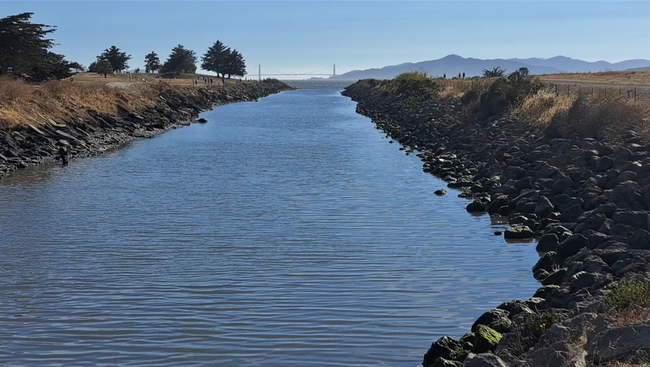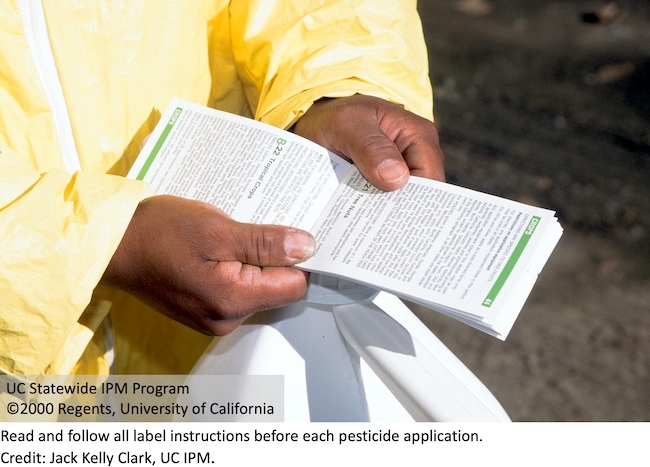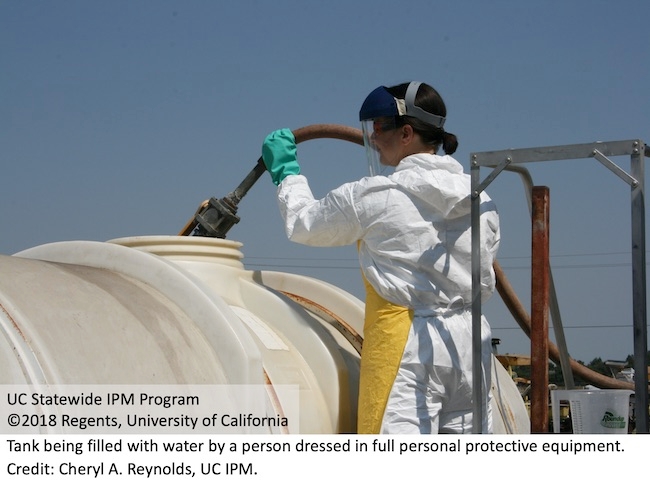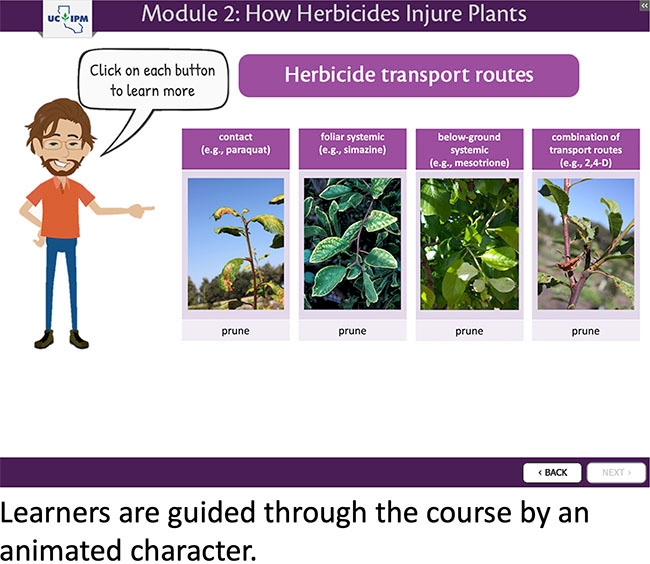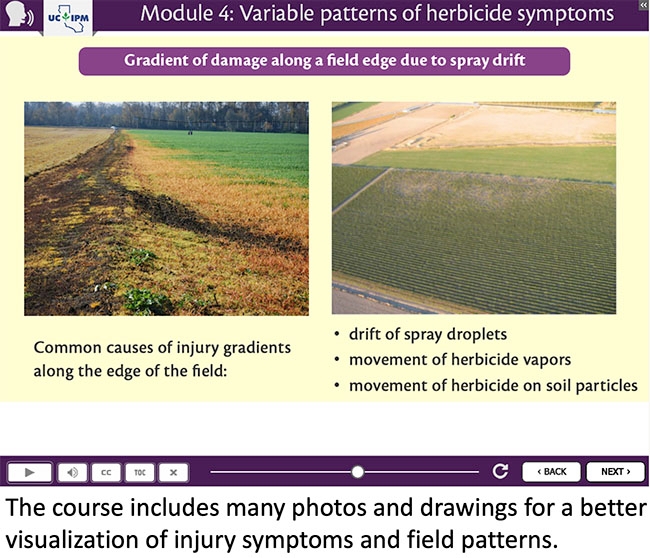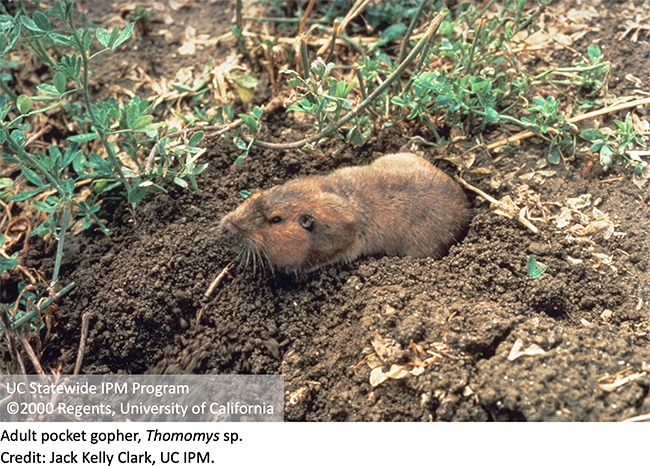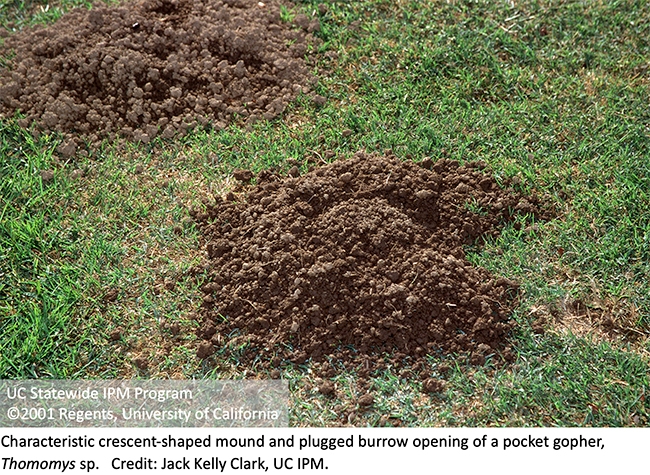- Author: Cheryl Reynolds
Are you in need of some last-minute CEUs for 2022? We're pleased to announce that a new online course on runoff and surface water protection is available and offered for free. If you are a pest management professional working primarily in structural pest control or landscape maintenance, then this course is for you! Developed by pest management experts from the California Department of Pesticide Regulation and the University of California, this course presents information on the Surface Water Protection Regulations that are found in Title 3 of the California Code of Regulations sections 6970 and 6972. These regulations were put into place to prevent pesticide runoff into California waterways and to reduce surface water contamination from pyrethroid insecticide use. In this course, you'll learn about the types of pesticide applications that are allowed under the regulations as well as application types that are prohibited and also application types that are exempt. The course takes a close look at pyrethroids, particularly bifenthrin because of its high use in urban areas, high detection in surface waters, and high toxicity to aquatic organisms. Fipronil, another commonly used ingredient in structural and landscape products, is addressed in the course as well because it has similar water-quality concerns as the pyrethroids. Specific label restrictions of bifenthrin and fipronil products in California are also discussed. The Urban Pyrethroid and Fipronil Use: Runoff and Surface Water Protection course has been approved by DPR for a total of 1.5 continuing education units (CEUs), including 0.5 hour of Pesticide Laws and Regulations and 1.0 hour of Other and by the Structural Pest Control Board (SPCB) for 1.5 hours of Rules and Regulations.
UC IPM currently offers 22 other online courses with Continuing Education Units from DPR. Many of our courses are also credited by the California Structural Pest Control Board (SPCB), Certified Crop Adviser (CCA), the Western Chapter of the International Society of Arboriculture (WCISA), and the Arizona Department of Agriculture.
In addition to our newest course, this year we are offering two other courses with CEUs for free – Air Blast Sprayer Calibration and Providing IPM Services in Schools and Child Care Settings.
Don't forget that if you are a license or certificate holder with the California Department of Pesticide Regulation (DPR) and your last name begins with the letters A through L, then this is your year to renew. DPR encourages all license holders to send in renewals as soon as possible.
If you have specific questions about renewal with DPR, please check out their new Licensing Renewal Information page.
Do you have general questions about our online courses and DPR and SPCB CEUs and want them answered live?
Join us on Zoom December 6. Drop in anytime between 3 and 4 pm.
Join Zoom Meeting
https://ucanr.zoom.us/j/98437300331?pwd=R0s4NklJZjBpeU5neVlva2lYV3Y2Zz09
Time: Pacific Time (US and Canada)
Dec 6, 2022 03:00 PM
Meeting ID: 984 3730 0331
Passcode: 532183
One tap mobile
+16699006833,,98437300331# US (San Jose)
+16694449171,,98437300331# US
- Author: Petr Kosina
To raise awareness of pesticide safety practices, February is celebrated as National Safety Education Month. This year the University of California Statewide Integrated Pest Management Program offers help to refresh your knowledge about safe and effective pesticide use. Two frequently sought-after online courses focused on proper pesticide use to avoid illegal residues and proper selection, use, and removal of personal protective equipment are offered for free during the month of February. Use code safety100 at checkout to get your continuing education units (CEU) for free.
Pesticides are among the most regulated chemicals in the country. In the United States, the Environmental Protection Agency (EPA) regulates the use of pesticides. All pesticides must be registered with the EPA, and the agency requires a battery of scientific tests to determine the potential risk to humans and the environment.
Best practices for using pesticides safely start with reading the label before each pesticide application. How will reading the label help you? Pesticide labels answer most of the basic questions you need to know about the product, its safe application and handling. Always make applications in strict accordance with all label instructions. Following label instructions will ensure safe, effective, and cost-effective use of the pesticide. Apart from the label, it is important to know what your state regulations are because some state regulations that also have to be observed are not written into the label. Note that not all pesticides approved by the EPA and available for purchase in the United States can be used in California. California is one of the few states that have more strict pesticide regulations for certain pesticides than what is required by the EPA. Even if you have used a given pesticide in the past, make sure you have an up-to-date label, as EPA may occasionally change labels. To learn more about pesticide labels and how to extract information relevant to the specific setting and situation in order to apply pesticides safely, enroll in the online course Proper Pesticide Use to Avoid Illegal Residues. Pest management professionals will earn 2.0 hours of Laws & Regs CEUs.
Because pesticides have the potential to cause injury or illness to anyone working with them, it is important to wear personal protective equipment, or PPE, to reduce a person's exposure to pesticides. PPE includes clothing and certain devices worn to protect the human body from contact with pesticides or pesticide residues. Regular clothing is not considered PPE even though some pesticide labels may indicate that these specific items of regular work clothes can be worn during certain activities. All employees who handle pesticides in California are legally required to wear PPE. They must follow all PPE instructions on the pesticide label and follow all California laws and regulations. To learn how to select the proper PPE, use it, remove it, and dispose of it or clean and store it before, during, and after each incidence of pesticide handling and application, enroll in the online course Proper Selection, Use, and Removal of Personal Protective Equipment (PPE). Pest management professionals will earn 1.5 hours of Laws &RegsCEUs.
Visit the UC IPM website to see all 22 online courses that are available for continuing education credit.
- Author: Petr Kosina
A brand-new online course on Diagnosing Herbicide Injury focusing on how an herbicide injury situation can arise, what information can help diagnose symptoms during field investigations, and what tools are available to you, is now available from the UC Statewide Integrated Pest Management program (UC IPM).
When unexplained damage is noticed on a crop or other non-weed plant, herbicides are often a primary suspect. That is no surprise because herbicides are very powerful and effective tools used to control weedy plants in a wide variety of locations. However, symptoms of many other plant stresses, such as diseases and nutrient deficiencies or toxicities, can closely resemble the injury symptoms caused by herbicides. Economic implications of herbicide damage can vary–in some cases visible injury may have very little direct economic effect while in others, even slight herbicide symptoms can affect the marketability of affected plants. In addition, the presence of an unregistered herbicide on non-target crops can result in illegal residues which could have both safety and legal consequences.
The new online course was developed by Dr. Brad Hanson and Dr. Kassim Al-Khatib from the Department of Plant Sciences at UC Davis, and UC IPM instructional designers. If you are a grower, pest control adviser, or pesticide applicator, then this course is a great opportunity to learn about how to approach crop injury investigation when herbicide is suspected cause. You will learn how herbicides injure plants, how long herbicide symptoms may last and factors that may influence the time that herbicide injury symptoms are visible, possible scenarios of herbicide exposure based on uniform and variable injury patterns observed in the field, how to prepare samples for the laboratory analysis and more.
The course content is free to anyone who wishes to view it. For those requiring a certificate of completion and continuing education units (CEUs), the regular cost is $30, but we are offering a reduced price of $15 through October 31, 2021. Diagnosing Herbicide Injury course has been approved by the California Department of Pesticide Regulation (DPR) for 1.5 continuing education units (CEU) of Other, Certified Crop Advisor (CCA) for 1.5 units (IPM), and the Arizona Department of Agriculture for 1.0 Credit.
If you are a DPR license or certificate holder with a last name beginning with letters M through Z, then this will be your year to renew. Now is a good time to check out the other UC IPM online training courses offered. All are 50% off the regular price through October 31st. DPR strongly suggests returning renewal packets back to them by October so that your license or certificate can be renewed before it expires. Many of our courses are accredited by DPR for continuing education hours and also by the California Structural Pest Control Board (SPCB), Certified Crop Advisor (CCA), the Western Chapter of the International Society of Arboriculture (WCISA), and the Arizona Department of Agriculture.
- Author: Cheryl Reynolds
We're pleased to announce that a new online course on managing ground squirrels and pocket gophers has been added to UC IPM's growing library of online training courses. This course consists of eight video segments recorded by Dr. Roger Baldwin, a University of California Cooperative Extension Specialist in Human-Wildlife Conflict Resolution. Originally presented in June of 2020 as part of the UC Ag Experts Talk webinar series, the course covers pest identification, types of damage they cause, and the importance of their biology and ecology.
If you are a pest management professional or grower interested in vertebrate pest management, then check out this course! You'll learn about current control strategies such as habitat modification, baiting options, fumigation, and trapping. The course content is free to anyone who wishes to view it. For those requiring a certificate of completion and continuing education units (CEUs), the regular cost is $20, but we are offering a reduced price of $10 through October 31, 2021. To receive the discount, enter the code SquirrelGopher50 in the voucher box when making the payment. Managing Ground Squirrels and Pocket Gophers has been approved by the California Department of Pesticide Regulation (DPR) for 1 CEU in the Other category and also by Certified Crop Advisor (CCA) for 0.5 unit of IPM credit.
If you are a DPR license or certificate holder with a last name beginning with letters M through Z, then this will be your year to renew. Now is a good time to check out the other UC IPM online training courses offered. All are 50% off the regular price through October 31st.DPR will be sending out renewal packets in August and strongly suggests returning them by October so that your license or certificate can be renewed before it expires.
UC IPM not only offers courses accredited by DPR, but many courses are also approved by the California Structural Pest Control Board (SPCB), Certified Crop Advisor (CCA), the Western Chapter of the International Society of Arboriculture (WCISA), and the Arizona Department of Agriculture.
- Author: Cheryl A. Wilen
This is especially important if you are an organic grower or manage areas that are not supposed to be treated with synthetic herbicides
THE MESSAGE BELOW IS FROM THE California DEPARTMENT OF FOOD AND AGRICULTURE
CDFA ISSUES STOP USE NOTICE AND STATEWIDE QUARANTINE ON ORGANIC FERTILIZER AGRO GOLD WS
SACRAMENTO, December 4, 2020 – The California Department of Food and Agriculture (CDFA) today announced that a Stop Use notice and statewide quarantine have been issued for the organic fertilizer product AGRO GOLD WS to all organic operations registered in California. CDFA lab analysis of the product detected the presence of Diquat and Glyphosate, which are substances prohibited by the U.S. Department of Agriculture (USDA) National Organic Program for use in organic production. Continued use of this product in organic production may jeopardize an operation's organic status.
Pursuant to authority under the California Food and Agricultural Code (FAC), Division 17, Chapter 10, CDFA's State Organic Program (SOP) in coordination with the Fertilizer Materials Inspection Program (FMIP) issued a Stop Use notice today for AGRO GOLD WS to all organic operations in California registered with the SOP. CDFA's FMIP also announced today that all California operations registered as organic in possession of AGRO GOLD WS must hold the product and contact CDFA for quarantine instructions on how to handle it.
AGRO GOLD WS is manufactured by Agro Research International, LLC. It has been distributed in a co-packaged box that also contains the product WEED SLAYER. CDFA continues to provide follow up to this investigation and is working with state and federal agencies. CDFA received a complaint about the AGRO GOLD WS product and program staff collected product samples from various locations to conduct lab analysis in CDFA's Center for Analytical Chemistry. FMIP is an industry-funded program that ensures consumers receive fertilizing materials that meet the quality and quantity guaranteed on the product label. Investigators located throughout the state conduct routine sampling and inspections, respond to consumer complaints, and enforce the laws and regulations that govern the manufacturing and distribution of fertilizing materials in California. CDFA's State Organic Program protects the organic label through enforcement, education and outreach.
If you are in possession of AGRO GOLD WS and seek additional information, please contact the Fertilizing Materials Inspection Program at FMIP@cdfa.ca.gov. Any appeal of the determination that this product violates the Food and Agricultural Code must be filed with the Fertilizing Materials Inspection Program no later than 15 days from receipt of the Stop Use notice and statewide quarantine. See Food and Agricultural Code section 14659.
Contact:Steve LyleDirector of Public AffairsCalifornia Department of Food and Agriculture916-654-0462


